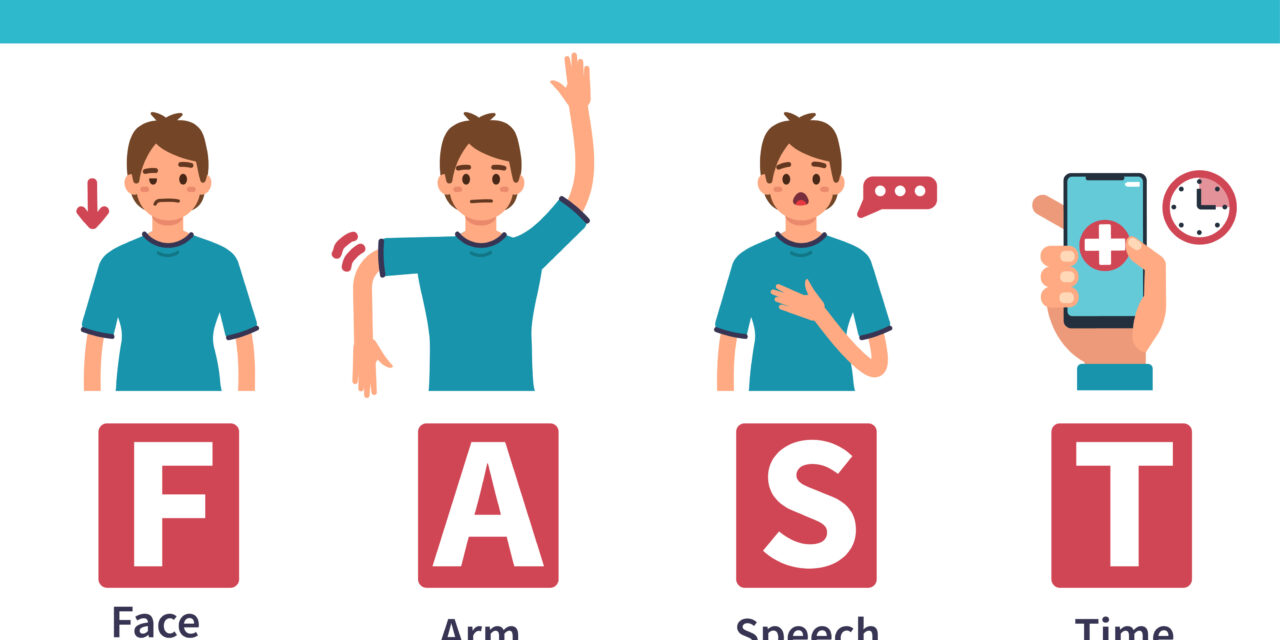Courtesy of the American Stroke Association
May is Stroke Awareness Month, and stroke is the No. 5 cause of death and a leading cause of disability in the United States. Stroke can happen to anyone — any age, any time — and everyone needs to know the warning signs. On average, 1.9 million brain cells die every minute that a stroke goes untreated.
Stroke is an emergency, so call 911 immediately.
Early treatment leads to higher survival rates and lower disability rates. Calling 911 lets first responders start treatment on someone experiencing stroke symptoms before arriving at the hospital. Men and women who have strokes often experience similar symptoms, such as face drooping, arm weakness, and speech difficulty. Other common signs for both women and men include problems seeing out of one or both eyes, and balance or coordination problems.
Symptoms in women.
Women can also experience general weakness; disorientation and confusion, or memory problems; fatigue, nausea, or vomiting. However, some signs of stroke in women can be subtle enough to be missed or brushed off, which can delay time-sensitive, lifesaving treatments.
If you’re having a stroke, it’s critical that you get medical attention right away. Immediate treatment may minimize the long-term effects of a stroke and even prevent death.
F.A.S.T.
Thanks to recent advances, stroke treatments and survival rates have improved greatly over the last decade. But to seek treatment, you must recognize the signs and symptoms of a stroke and act. Use the acronym FAST — Face drooping, Arm difficulty, Speech slurring, Time to call 911.
How do strokes differ?
A transient ischemic attack (TIA) is a warning stroke, or commonly referred to as a mini stroke. TIA is a medical emergency with the same symptoms as an ischemic and hemorrhagic stroke. Since most TIA symptoms last from just minutes to 24 hours, they are often dismissed and not taken seriously. TIAs occur before about 15% of strokes, and are considered “warning strokes.” They are associated with additional TIAs, full-blown strokes, or other later cardiovascular problems. Some problems occur within just days or weeks of a TIA, so early intervention to reduce risk is vital.
Silent strokes are undetected strokes.
Silent strokes occur when a blood vessel blockage in the brain causes cells to die, but have no obvious warning signs or symptoms. About one-fourth of people over age 80 have at least one such area of tissue death in the brain. The condition is more common with increased age, in individuals who smoke, and those with a history of vascular disease (all conditions that affect the blood vessels). Experts estimate that 10 silent strokes occur for every stroke with detectable symptoms. Despite being called “silent,” these strokes have been linked to subtle problems in a person’s movement and mental processing. They also are linked to future risk for stroke and dementia.
If you or a loved one is having any symptoms, remember time matters. Call 911 immediately.
Learn more about the signs and symptoms of stroke, stroke prevention, and more at stroke.org.










